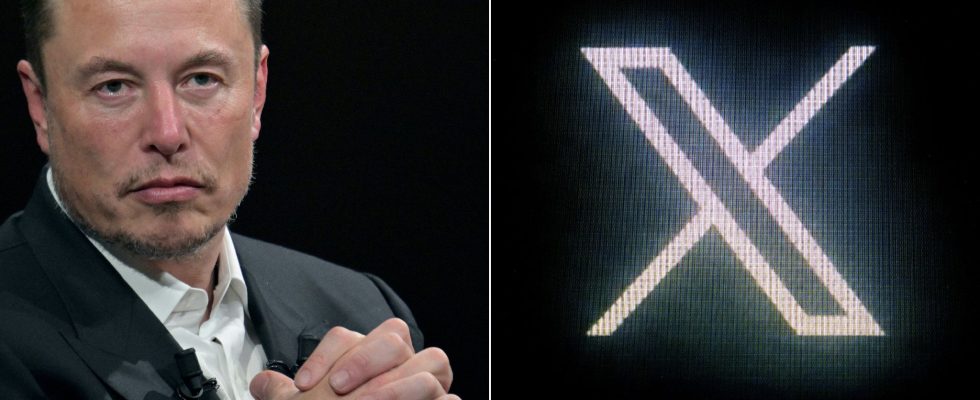A first anniversary marked by all-out controversies. This Saturday, October 28, it has now been a year since Elon Musk bought Twitter for nearly $44 billion, after a long journey that narrowly missed ending up in American courts. The next day, the sulphurous billionaire fired the director of the social network, Parag Agrawal, as well as two other managers, and proudly announced that “the bird was free”.
To celebrate its first birthday, Elon Musk took the opportunity to make new announcements concerning the paid subscription system, one of the main priorities of this new version of Twitter. From now on, three plans will now be available: Basic, Premium (formerly Blue) and Premium +, respectively at 3, 8 and 16 dollars per month. In addition to the benefits included in the Premium plan, Premium + subscribers will benefit from much better exposure for their messages (more chance of being read and generating reactions) and will no longer see advertisements. The cheapest option includes basic editing tools, with the ability to correct a message or publish longer videos. But it does not open access to the tools for creators – which allow them to be paid – nor the certification of the account with the famous blue check mark.
The Twitter Blue failure
Pay to take full advantage of Twitter’s features: if Musk is no longer the only one to break the taboo of free social networks, none of the other behemoths have made it such an absolute priority to raise the bar. a sector in decline economically. The trajectory was notably initiated by the launch of Twitter Blue on February 2 in France. For 8 euros per month, any user can now display a blue dot on their profile, previously reserved for public figures, the media and institutions: in short, reliable or recognized accounts.
If this new system has largely opened the window to disinformation, giving more visibility to anyone ready to put their hand in their wallet, it is above all a way for Musk to bring money into Twitter’s coffers . However, all indicators show that this new option is far from being a success. According to the specialized media Mashable, citing researcher Travis Brown, less than 1% of Twitter users would have taken the step of subscribing to a Twitter Blue subscription. That’s almost a million users. A failure, when Twitter has more than 200 million daily worldwide.
The billionaire’s choices, such as renaming his social network “X” on July 24, seem today very far from being conclusive. According to Wall Street Journalciting data from measurement company Sensor Tower, the number of daily users passing through X would have fallen by 16% between October 2022 and September 2023.
To compensate for this relative failure of Twitter Blue, the social network is now even testing in the Philippines and New Zealand to make registration paid for each new user registering on the platform. One dollar per year: a minimum sum, officially to limit the registration of “robots”, these automated accounts which can, for example, be used to artificially amplify political messages. This influx of money could also be welcome in a difficult economic context, when the value of X has fallen to 20 billion dollars, far from the 44 spent by Elon Musk during his takeover.
A reputation at half mast
Over the past year, Twitter’s entire image has been largely damaged. The billionaire never hid it: he wanted to make his social network a temple of freedom of expression, by drastically reducing moderation, and not hesitating to publicly mock anyone who challenged his decisions, primarily the media . This Friday, October 27, a #NoTwitterDay boycott movement was even launched to protest against the dissemination of disinformation and the lack of regulation of hateful content on the social network.
If this boycott movement will probably not have shaken the walls at X, these successive controversies are not without consequences. As early as March, citing estimates from Pathmatics/Sensor Tower, L’Express explained that “advertisers like Coca-Cola, Jeep, Merck and hundreds of other companies have cut off the advertising tap, worried about the platform’s shift towards an unlimited “freedom of expression” desired by the tech troublemaker.” In July, Elon Musk himself admitted that the social network’s advertising revenues had been halved in one year.
With a loss of users, faced with very sharply decreasing income, it is difficult to imagine that a new formula at 16 euros per month – is more expensive than a subscription to Netflix for two screens or a telephone plan very comfortable in France – will allow X and Elon Musk to calmly consider the future of the social network. The project to transform Twitter into a Western “WeChat”, like the Chinese platform serving both messaging and online payments service, still seems a long way off.
